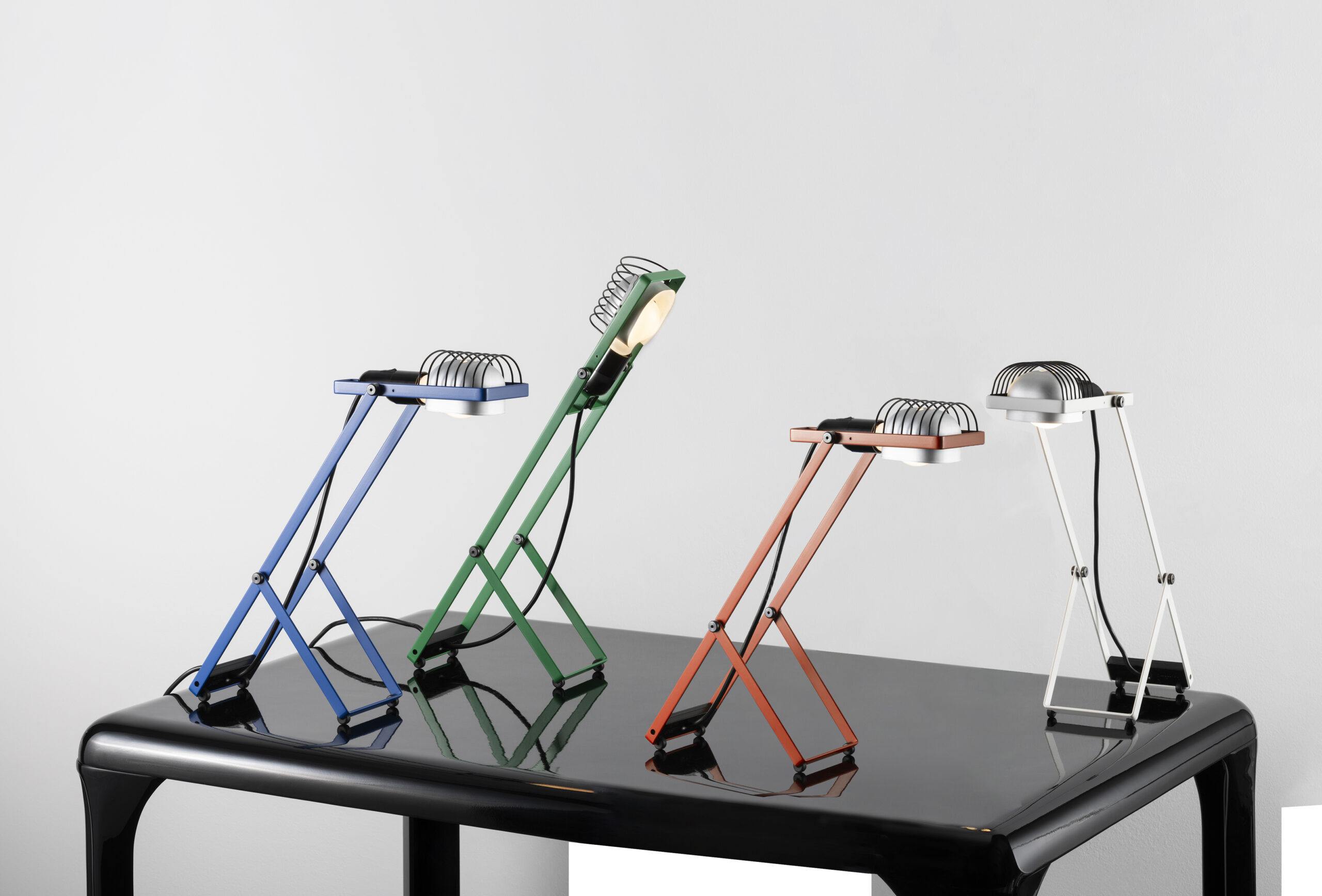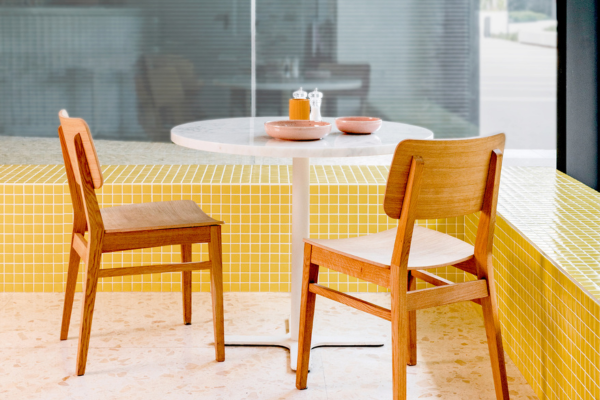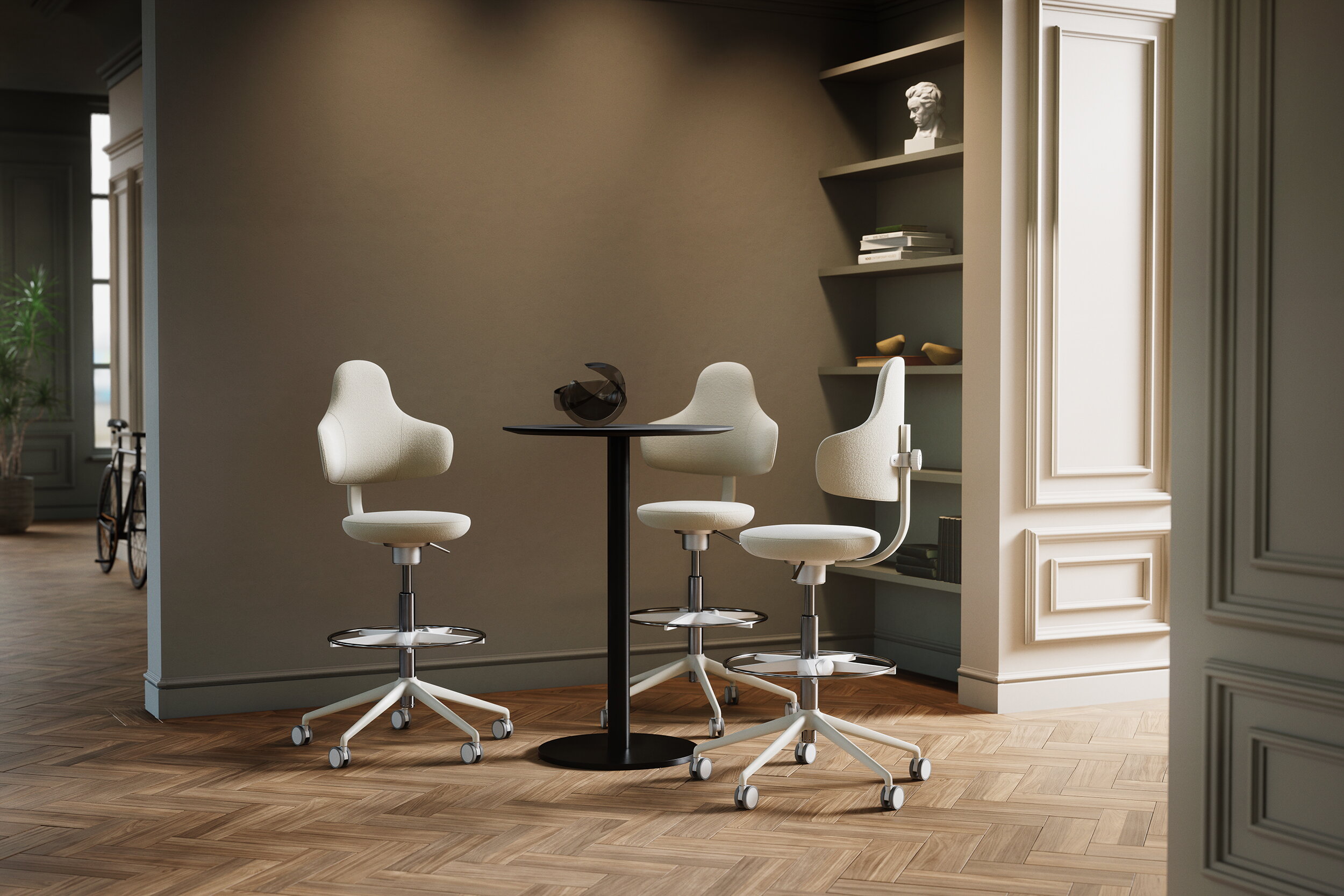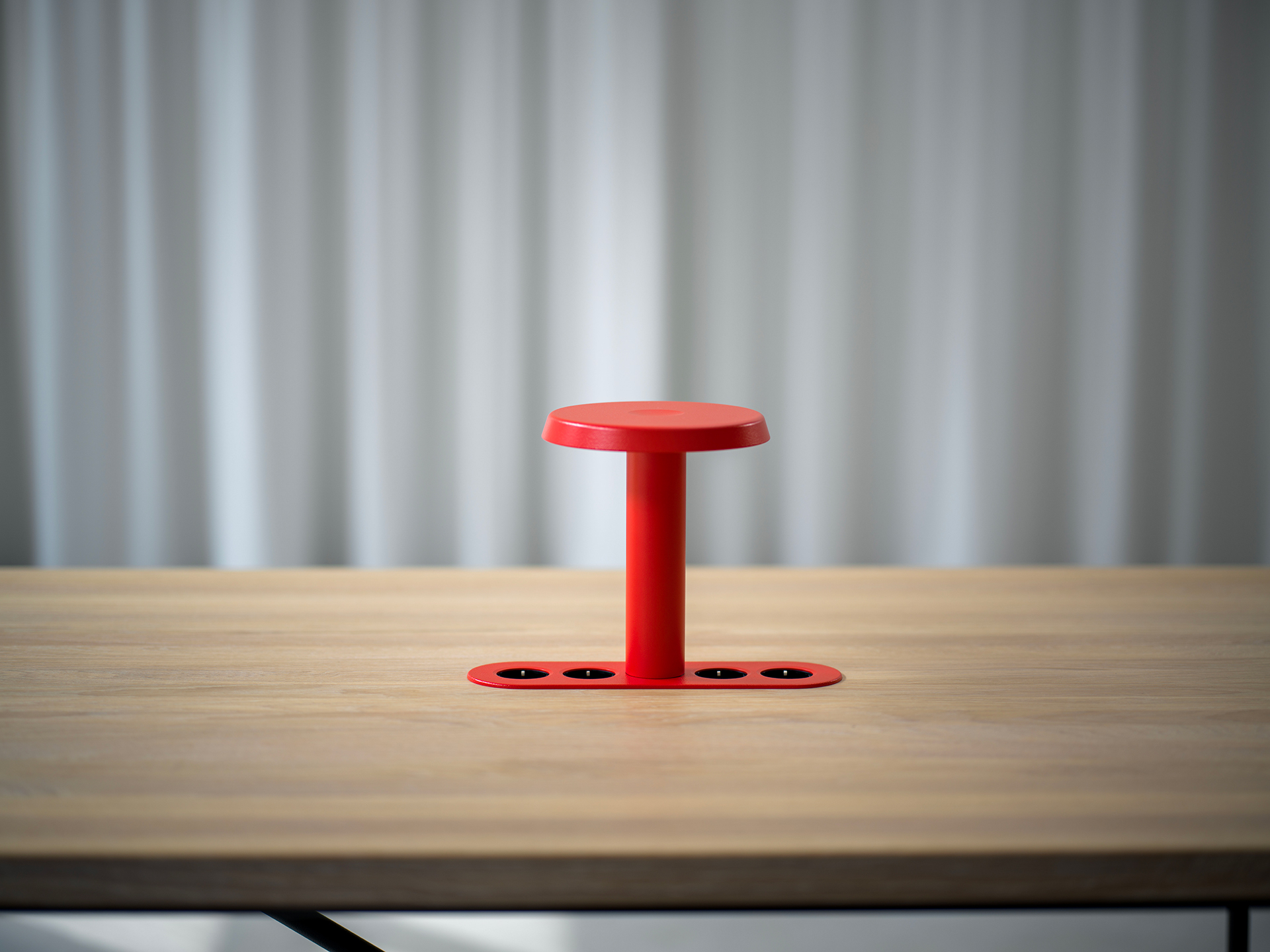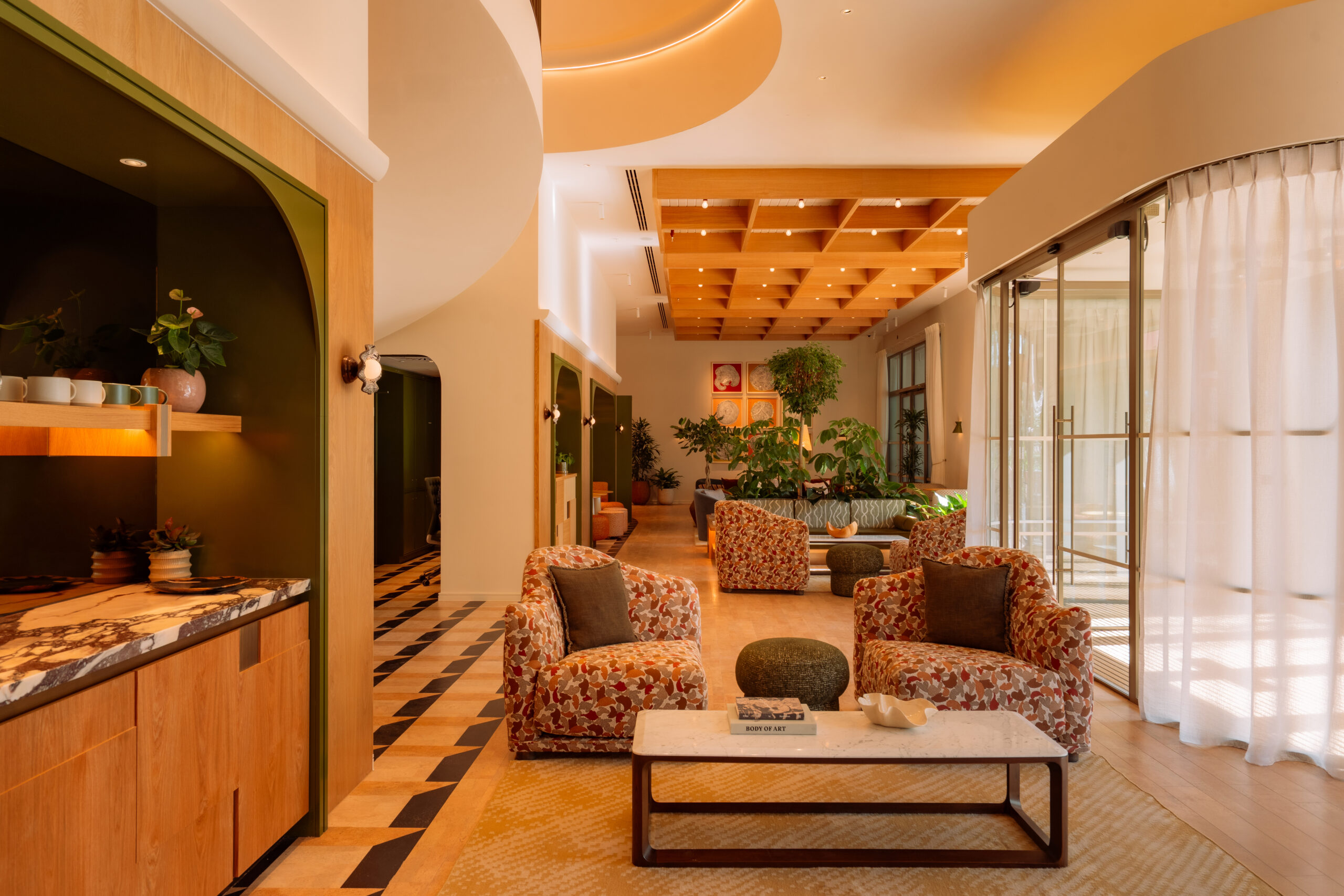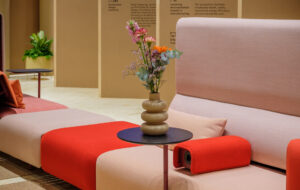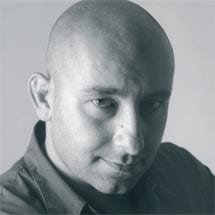
 Words by Kerstin Zumstein
Words by Kerstin Zumstein
French designer and architect Jean-Marie Massaud came to London to promote a product – Axor’s new bathroom range for Hansgrohe – for the first time this week. Kerstin Zumstein popped in for a blitz interview and discovered the meaning of life, and a view of the world à la Massaud
1 Kennedee armchair for Poltrona Frau
2 The Manned Cloud, a concept design for a flying eco-hotel
3 Easy Block sofa for Offecct
4 Project for Volcano Stadium, Guadalajara, Mexico
5 Bond chair for Offecct
6 Toilet Brush Holder for Axor
7 Jean-Marie Massaud
8 Aston Conference armchair for Arper
KZ How come it’s the first time you’re in London for a product launch?
JM I normally hate this kind of thing and shy away from promotional tours. I don’t even show up when I win an award [for instance, this year he received Créateur de l’Année at the Salon du Meuble in Paris]. But I really like the people at Axor, and I’ve had a long-standing quality relationship with them.
KZ Describe the link you find between architecture and design.
JM For me it’s all the same: architecture, design, politics. It’s a question of how you look at something in a specific context and what makes sense in that context. I’m a progressive person and trust the idea of creating something complete. I work on projects not products, delivering a whole package.
KZ Like the Gesamtkunstwerk, the total work of art?
JM I always say, “Don’t ask an architect to design your own home.” He will do something vast, expressive of his own personality, aiming for total design, and then you’d be forced to live in someone else’s house.
KZ So how do you design?
JM I see my way of designing as simply writing a script which then writes the scenario. What is interesting for me is what I call “life scenarios” that continuously progress our way of life. And design should facilitate this.
For example, with the Water Dream, a concept bathroom for Axor, I focused on the relationship with water, not from a general point of view but from a sensual and emotional angle, and that script then translates into the necessary elements, the prosthesis needed to create that feeling, like the shower head, the tap etc.
I mean, I don’t care about the shower heads. I want light and warmth – that’s what people look for: the emotion, the atmosphere. How it is provided is not important.
KZ Is creating these environments/scenarios the main purpose of design?
JM Well, yes, the created scenario is what counts for each individual. But my ambition is that at the same time this scenario solves collective issues. For instance, designing a system like the Axor bath that saves three litres per minute with maximum comfort – that is designing progressively, always merging desire with responsibility.
KZ You’re famously quoted as seeing the role of designers being one of social responsibility.
JM Absolutely, all humans should take social responsibility but designers especially have the potential to provide life-enhancing strategies. We, designers, are actors of this market economy, which is based on quantitive growth. Essentially, everything is based on growth, because it’s the foundation of life. If things stop growing, they die. Simple. But, currently, humans have removed themselves from the ecosystem. The planet needs a certain harmony, a symbiosis, to survive, and humans are not part of that cycle anymore. They just take without giving back effectively preventing further growth. So, the responsibility I see is to work towards qualitative growth.
KZ What does this qualitative growth entail?
JM It means that, while still providing a good quality of life in terms of comfort, every designed object has to be designed to the minimum… of material that is, not style! That’s why I fine-tune every project I’m doing towards using the least possible energy, material etc, while ensuring things look stylish and elegant.
KZ Like your handmade Ad Hoc chair for Viccarbe, launched in Milan this year?
JM All furniture I do now is light. If you don’t need it, why keep the material? For the gimmick, for the statement? I don’t care about statement, I care about competency, relevancy, emotion and elegance. Lightness is an attitude, an ecological approach, about getting the service without the constraints.
KZ Ok, but essentially, if your aim is the minimum use of material, doesn’t that contradict and question your existence as a designer?
JM Eh bien! The ideal is to get an immaterial world where it’s all about emotion, energy and information. But while we get to this ideal we still need to deal with materials. I always design furniture with the minimum of matter and the maximum of use, comfort and elegance because people don’t understand the product by the demonstration. They understand it here (he touches his stomach) – a gut-feeling. They look and say, “Ha! Yes, it looks comfortable,” without knowing that it’s also ecological etc. That’s why I like designing things that look like they are floating. Why show the functional parts of a product? People don’t want to see that!
KZ Like your Volcano stadium in Mexico and the Manned Cloud.
JM Yes, that illusion of lightness that inspires the magic of matter is what creates a quality emotion.
KZ Will the Manned Cloud, your flying eco-hotel, ever happen?
JM Technically it’s doable alright, but economically it’s a different story. It would cost 3.5 billion euros to build. But that’s why I did this project. It’s an alternative to the resorts that are destroying the beautiful coastal strips all over the world. I’m still looking for investors!
KZ Very Jules Verne. So how does it work?
JM The huge volume of the “whale-in the-sky” is filled with helium, which is lighter than air, so theoretically it flies. Living in the sky, is it really a phantasm?
KZ Hotel in the sky, how about a flying office?
JM Yes, why not.
KZ What would your dream workplace be?
JM Working on a boat, I’d love that.
KZ Your designs often incorporate a futuristic element – what is your vision of the workplace of the future?
JM I’m currently working on a project for the office with a very, very big office company – I can’t say who but bigger than Vitra. In this process, I realised how we spend two-thirds of our waking time at work, so again the office has to be an ecosystem where we feel comfortable. Therefore workplace design needs to take a holistic approach. The future office will be about mind and body – ergonomics is also in the mind you know.
Architecturally, the office of the future is about the mutation of space rather than the current movement towards polyvalence or modularity. Moving furniture modules around is just mechanical, modularity is mechanic but mutation is something… organic. I don’t like this word, but it’s something more close to life: holistic.
KZ In your book Human Nature you say, “Humans will reinvent themselves – a new era is near.” When, how and why?
JM I see a change on the horizon. Things reinvent themselves whenever there is a crisis. Currently we’re approaching three points of crisis: environmental, economical and one of value. Religion always provided a social link for humans to live together but things have changed. In times when people are scared they go back to traditions, they re-evaluate. We will all be obliged to understand that this period of economical growth will soon be over. As a result, the economy of having will evolve into the economy of being. Material will become energy, the object will become service, information and emotion.
Like after a war when people have to rebuild, it will be sad but interesting. We will finally think about the essential: what is my life project, why am I here, just to work? What are our collective responsibilities, what is our relationship with nature?
KZ When do you foresee this new era coming upon us?
JM It will arrive very soon, in about 15 years. We currently live in a state of decadence and the crisis will help people to crystallise what the meaning of life is.
KZ So what is the meaning of life?
JM For everyone to create their own life project – we will all be our own designers, designing our life scenario. I truly believe design will become the future value. I am preparing for the new era of humanity by driving human innovation. People talk of technological innovation but human innovation is what will truly supply a sustainable direction.
KZ Where do you see human innovation in current design trends?
JM For me, trends are artificial – they simply create a market. They are decadent. But I do believe that human innovation will surface in design. I think the best designer in the world is Steve Jobs, the CEO of Apple, because his designs have a strategy, a philosophy.
KZ All this talk about the end of our life as we know it – do you consider yourself an optimist, pessimist or realist?
JM I’m just being realistic! I’m optimistic, yes, in that I’m excited about what is to come. We live in a society that keeps rising and rising, and now we’re at the peak of decadence. The crash, the fall is near. But in effect, that means new challenges, which can only be a good thing.
KZ Finally, do you believe in love?
JM Mais oui. Yes, of course. Much more than love I believe in harmony, because love comes with passion that can induce jealousy and everything else. I believe in love and conscience, to be open and sensitive to everything around you.


